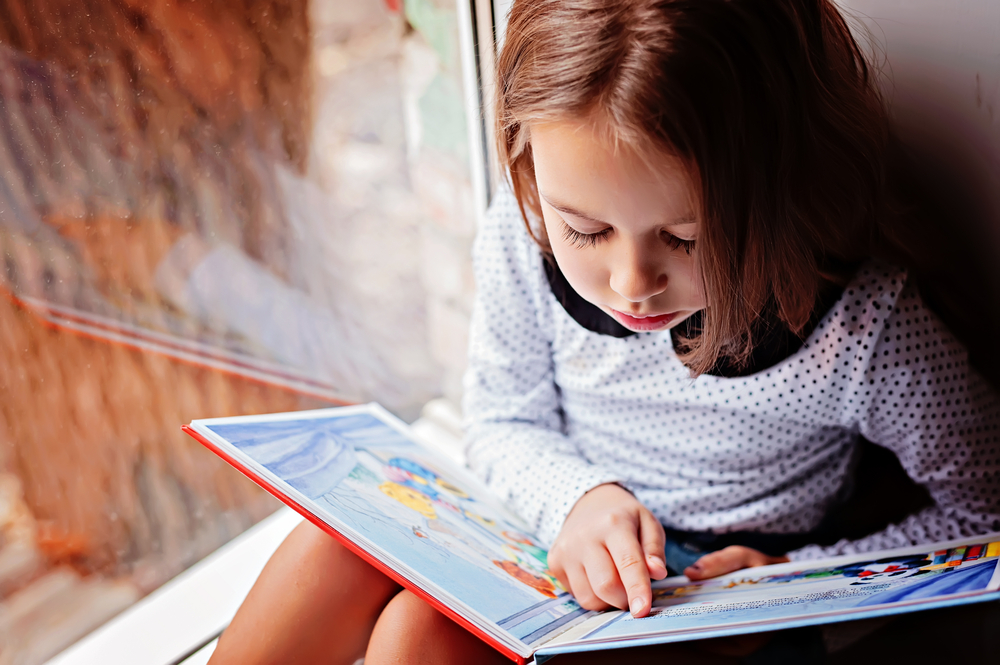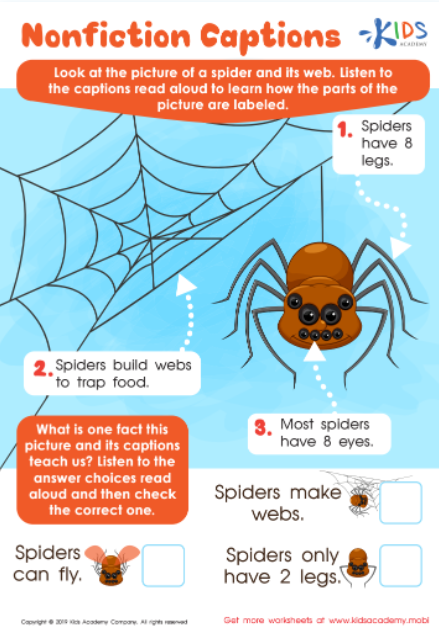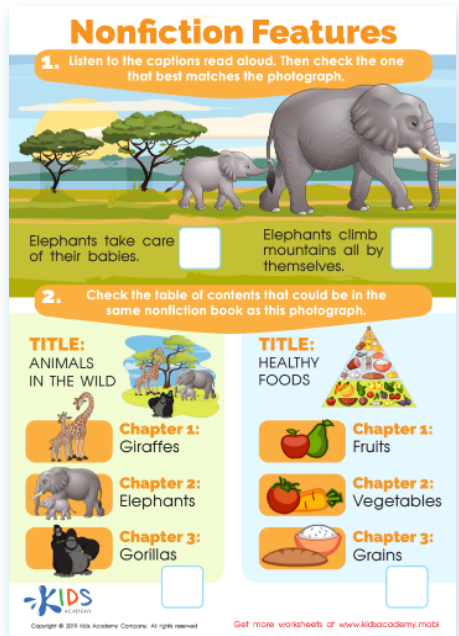-
English
-
English Pre-K
-
Unit 1: Early Literacy Skills
-
ABCs
- Pre-writing Activities
- Letter A
- Letter B
- Letter C
- Letter D
- Letter E
- Letter F
- Letter G
- Letter H
- Letter I
- Letter J
- Letter K
- Letter L
- Letter M
- Letter N
- Letter O
- Letter P
- Letter Q
- Letter R
- Letter S
- Letter T
- Letter U
- Letter V
- Letter W
- Letter X
- Letter Y
- Letter Z
-
Phonological Awareness
- Rhyming Words
- Letter Sounds B, C, D, and F
- Letter Sounds G, H, J, and K
- Letter Sounds L, M, N, and P
- Letter Sounds Q, R, S, and T
- Letter Sounds V, W, X, Y, and Z
- Letter Sounds A, E, and I
- Letter Sounds O and U
- Beginning Sounds
- Matching Letters to Sounds
-
ABCs
-
Unit 2: Vocabulary
-
Common Words
- Sorting Words into Categories
- Color Words
- Verbs and Adjectives
-
Sight Words
- Sight Words 'I' and 'Can'
- Sight Words 'You' and 'Like'
-
Common Words
-
Unit 3: Print Awareness
-
Parts of a Book
- Working with a Book
- Spaces Between Words
- Text and Illustrations
-
Picture Books and Poems
- Picture Book Text Features
- Poem Text Features
- Signs and Labels in the Community
-
Parts of a Book
-
Unit 4: Reading Literature
- Questions About Stories
- Discussing Stories
-
Unit 5: Reading Informational Texts
- Retelling Details in a Text
- Questions About a Text
- Connections Between Events
- Text Features
- Describing Illustrations
-
Unit 1: Early Literacy Skills
-
English Pre-K
-
Math
-
Math for Pre-Kindergarten
-
Logic and Geometry
-
Matching and Sorting
- Same and Different
- Which One Is a Little Different?
- Objects That Go Together
- Sorting by Color and Size
- Sorting The Same Group in Different Ways
- Patterns
-
Shapes
- Shapes in Our Environment
- Naming Shapes Regardless of Size
- Making Shapes in Preschool
- Comparing Shapes
- Relative Positions
- Sorting Shapes
-
Matching and Sorting
-
Early Number Sense
-
Numbers 1–5
- Counting to 3
- Counting to 5
- Arranging Objects up to 3 Objects
- Arranging up to 5 Objects
- Writing Numbers 1–5
-
Numbers 1–5
-
Numbers up to 10
- Counting to 10
- Arranging up to 10 Objects
- Number 0
- Writing Numbers 6–10
- Breaking Down Numbers 6-10
-
Logic and Geometry
-
Math for Pre-Kindergarten
Let’s Focus on First Five Text Features
Imagine reading a recipe written in paragraph form. You are scanning for an ingredients list with no success. Attempting to cook with no numbered steps, and no list of ingredients sounds chaotic. Wouldn't you agree? For most people, this recipe would be difficult to follow. Why some ask? It’s simple; text features.
Text features, such as a table of contents, headings, photos, captions, maps, and diagrams, are crucial to designing text that is easy to digest. Informational texts read differently than narrative pieces. Our youngest readers need to recognize text features and use them to comprehend informational text.

Table of Contents
A table of contents lists page numbers for different topics or chapters. Your child may see a table of contents in a science or social studies textbook. Practice using this feature, when possible, to reinforce this concept.
Headings
Headings give titles to sections of a nonfiction text. Teach your child how to scan the headings before reading to preview what they will read. This preview serves as a basis for predictions and sets a purpose for reading.
Photos, Illustrations, and Captions
Your child can learn so much from the photographs in an informational text. In many cases, information in the photographs is not captured in the text. Sometimes informational texts have illustrations. For example, there may be a drawing of the digestive system in a science text. Captions are sentences below a photograph or illustration to explain the picture.
Maps
Maps are another new skill that your Pre-K child is just getting used to. At this age, your child can handle a community map with two or three roads at best. Maps have their own unique text features such as a key, title, and scale. Your child will need some instruction on using these features to understand the map.
Diagrams
Many nonfiction texts designed for Pre-K students have diagrams. For example, a text may have a diagram with the parts of a pumpkin.
What Does My Child Need to Learn About Text Features?
Your child needs to know what the text features are.
Each time you encounter a new informational text with your child, point out text features and review the era definition. It may be helpful to have an anchor chart or a resource sheet available for your child to refer to.
Your child needs to know how text features help them understand the text.
Use questions to give your child the opportunity to analyze how text features help them understand a text. For example, you can ask how the photograph of an island helps you understand the definition of the word island.
Your child needs to use text features to skim and scan.
A great before-reading strategy to help set the purpose for reading is to skim and scan. Encourage your child to read the title and look at the photographs first. If the text has headings they can read those as well. This preview of information will help your child to build an understanding of what they will learn in this text.
Your child needs to know when to read the text features.
Sometimes it can be challenging to decide when to read text features. As a rule, text features should not be skipped. One approach is to review the text features before reading. Ben your child can reread the text features after reading the page to solidify understanding.
Key Takeaways
In an informational text, the text features are just as important as the text. Make sure that your student no what’s the purpose of each feature. Your child needs to think about how these text features enhance his understanding of the text. Incorporate these talking points the next time that you read an informational text with your child.
Use our catalogue via the link to check out our other articles on reading informational texts in Pre-K.
By: Monica Edwards
English Language Arts Teacher and Curriculum Writer



